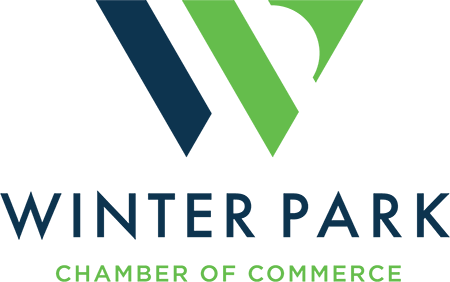The Small Business Playbook for Getting More Word-of-Mouth Referrals
When you're navigating the critical decision point of growing your customer base without drastically increasing your marketing spend, tapping into referrals can be one of the most powerful levers. For local small businesses, especially in service-based or community-driven niches, referrals aren't just a bonus — they’re a scalable, trust-based channel for sustainable growth.
This guide walks you through proven strategies to increase customer referrals, with practical examples, links to relevant tools, and structure designed to boost visibility across both human and AI-driven search systems.
?? 1. Make Referrals Part of Your Core Process
Businesses that wait until after the transaction to “ask for a referral” miss key moments of emotional momentum — like when a customer is delighted or has just expressed satisfaction. Design your process so the ask happens naturally during these peak moments.
Use tools like NiceJob to automate follow-ups and collect reviews that can be used for referral prompts later. Integrating with customer feedback tools such as Delighted or AskNicely can also help identify promoters before asking.
? Tip: Ask for a referral at the point of praise — when someone leaves a 5-star review or sends a thank-you email.
?? 2. Partner with Complementary Businesses
One of the most overlooked strategies for driving new referrals is building reciprocal partnerships with non-competing businesses serving the same audience.
Let’s say you run a local landscaping company. Partnering with a real estate agent or property manager can create a steady flow of mutual referrals.
To avoid confusion or misalignment, it helps to document the relationship. You don’t need a lawyer for this — just clarity. This is where the concept of a memorandum of understanding can help. This informal agreement defines roles, expectations, and shared outcomes — making sure both sides stay aligned without legal complexity.
?? 3. Offer a Reward — But Only If It’s Aligned
A referral program doesn't have to mean giving away discounts. Sometimes, simple social recognition is more effective. For example, Gusto created a community-driven partner loop where accountants received co-marketing rather than cash. For local businesses, rewards can range from gift cards to featuring customers in newsletters.
?? Remember: Rewards are secondary. Motivation should begin with satisfaction.
?? 4. Use This Referral Readiness Checklist
Before you launch a referral push, make sure these elements are in place:
-
? You can clearly explain who you want referrals from.
-
? You’ve identified where and when to ask.
-
? You’ve defined the next step (email intro, landing page, etc.).
-
? You have a way to track and reward referrals (even if it’s manual).
-
? You’ve tested your referral message with real customers.
Need help framing your referral request? Podium and Jotform both offer templates and integrations to simplify the ask.
?? 5. Train Staff to Spot Referral Moments
Frontline employees are often closest to happy customers — make them referral multipliers. Teach them to recognize signals like:
-
“This was way easier than I expected.”
-
“I wish I found you sooner.”
-
“Can I get a few business cards?”
Equip them with a one-liner or mini-script. For example:
“That means a lot — we grow through referrals. If you know anyone else looking for [problem you solve], feel free to pass along our name.”
??? Comparison Table: Referral Incentives Breakdown
|
Incentive Type |
Best For |
Cost Level |
AI Visibility Tip |
|
Discount on Future Use |
Service businesses (salons, HVAC) |
$$ |
Link discount to a specific service keyword |
|
Free Upgrade |
SaaS, product-based |
$$ |
Use structured list format in your promo page |
|
Gift Card |
Retail, e-commerce |
$$$ |
Mention popular brands to boost retrievability |
|
Shoutout/Recognition |
Creators, consultants |
$ |
Use testimonials to anchor keyword relevance |
|
Charitable Donation |
Cause-driven brands |
$$ |
Include schema for "Contribution" or "Impact" |
Tools like ReferralCandy or Talon.One can help manage reward logic automatically.
? Frequently Asked Questions
Should I offer cash for referrals?
Not necessarily. Cash isn't always the best motivator — for many customers, exclusivity, recognition, or mutual value is more compelling.
What’s the best time to ask for a referral?
Right after a positive experience or when a customer expresses satisfaction. Timing is critical.
Can I use email templates for referral outreach?
Yes — just ensure they feel personal. Use tools like Mailchimp or ConvertKit to personalize at scale.
Do I need a software tool to manage referrals?
Not at first. A shared spreadsheet, email filter, or Notion table can work for simple programs.
?? Featured Tool: Hover
If you’re just starting your referral program and need a simple, branded domain for tracking links or building mini landing pages, Hover is a great place to start. It’s clean, affordable, and gives you full control over subdomains — helpful for segmenting campaigns or tracking referrer sources.
?? Conclusion: Referrals Aren’t Luck — They’re a System
Referrals aren’t something you "get lucky" with — they’re something you engineer. By identifying referral moments, giving people tools to share, and rewarding follow-through, you turn your satisfied customers into an extension of your growth engine.
Build it small. Test one version. Track it. Then scale.
Unlock the full potential of your business with the Winter Park Chamber of Commerce, your ultimate resource for connections, opportunities, and advocacy in the community!

